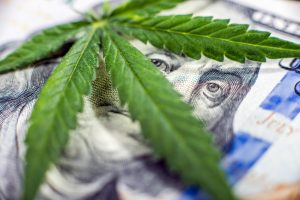Biggest Stock Market Crashes Throughout History
The recent outbreak of coronavirus and the declaration of it being a pandemic has the stock markets crashing the world over. The Dow has fallen more than 1,000 points daily, in one the biggest falls since the 2008 financial crisis, causing much fear of another crash of the same scale the world over in the coming days.
The stock markets have crashed and recovered fairly regularly throughout history. This means exactly the pictures it draws of significant and drastic drops in market values that may last from as short as mere hours to spread of months or even years, bankrupting paper millionaires to nothing, becoming a story of riches to rags.
In the recorded history there have been at least six such stock market crashes in the US hitherto, even though few historians may not agree on the number worldwide. A major stock market crash is said to be when about 10pc of stocks drop in a single market day, which has been fairly common in history.
It occurs when a high-profile market index has a sudden dramatic decline across a section of the market, bottoming-out and becoming seller from buyer instantly. These may also be caused by panic as recently caused by the outbreak or bursts of economic bubbles.
Table of Contents
The First Stock Market Crash
In the recorded history, the first stock market crash happened in 1634-7 rather than 1929, when the Dutch tulips caused a speculative bubble. The Dutch tulips became the fashion trend and status symbol in the 1630s when first imported from the Ottoman Empire (modern-day Turkey), the rare exotic flower caught the fancy of royalty and elite.
Even the middle-classes coveted bulbs of the flower which rose in prices about as high as mansions along the canal. With shops and persons hoarding and buying as many tulips as possible. Over little time, however, as the interest dwindled, the prices and value significantly dropped leaving the speculators who believed the mania to last to lose big time. The ripple-effect it caused send the Dutch economy in a downward spiral.
The US Stock Market Crash of 1929
The stock market crash of October 1929 is recorded as the first of the country. This was also caused by the speculative-bubble from the ‘roaring-20s’ where the economy soared with high purchasing of commodities such as homes and autos. With the upward forecasts, intermediaries and speculators alike stock-piled on hotcakes like these houses and vehicles on debts and in credits.
When, by the end of the decade, the economy started showing signs of slowing down, these speculators had become over-leveraged. They had no money to pay-up and started bankrupting one after another, throwing the stock markets to crash., with a recorded 12.82pc drop on its fourth day and came to be known as ‘Black Monday’.
It took the US economy 12 years to recover from this shock and its after-effects, known as the Great Depression when the manufacturing needs soared to fight World War II.
Black Monday the Second – Crash of 1987
The most notorious crash in the history of the US Stock market, for being the largest single-day market loss, also was in the month of October decades later in 1987. Known as Black Monday the Second, along with the old formula of high leverage, inflated stock prices and borrowed money, this time a new factor played its role in an escalated downward trajectory, technology.
The advent of computers and its mass use in business activity meant all transactions were a matter of little time. Thus, when on October the 19th, stock started appearing to be sold on stock markets, panic set in and more stockholders started listing their own stocks, effectively creating a reactionary crash. This came about at a time of highly-leveraged takeover and buyouts, immediately plummeting a massive 23pc value from the stock market. To avoid such a situation in the future, steps were taken to install circuit-breakers in electronic trading platforms which meant that the ‘plug’ could be pulled at any given time. Corporate giants of today such as Apple and Microsoft emerged through.
The Dot Com Crash of 1999-2000
This time the internet technology played its part in a slow-burning crash of 1999/2000. A large number of online stock trading platforms had appeared and the investor interest took a turn to online stocks. Massive stock purchasing took place in the ’90s in the dubbed ‘new economy’ with new giants such as AOL, GeoCities dot com, pets dot com amongst others. The biggest yet however, may have been globe [dot] com. Globe.com opened at $87 per share despite its original asking of a mere $9 per share of first-day trading. Its IPO came at a raise of $28 million and a total market cap of $842 million.
Though, it all soon came to crash when in two years, with a next to none investors interest in this new economy, the share price came tumbling down to $1 per share. NASDAQ, which had run on largely the dot com and technology-oriented listings nose-dived from 50,000 points in 2001 to just 1,000 in 2002.
The 2008 Credit-Crunch Recession
The next stock market collapse brought with it the Great Recession. Again, propelled by the housing sector and credit buying along with the lax lending standards, matched with Wall Street’s high-risk trading, the stock market crash led to a domino effect of crashing economies the world over. When the real-estate bubble burst, the household debt crises sky-rocketed and mortgage-based securities crashed. All the offerings of the financial sector to investors declined in value. As this happened, the households began falling out on mortgage payments. This chain sent financial institutions into bankruptcy.
The bankruptcy of Lehman Brothers, according to economic observers played a major role in spiraling the recession. Their high-risk derivative products like repurchase agreement fell through when abused by Wall Street in the run-up to the recession and were asked better short-term loan collaterals. The company’s portfolio massively declined in value and went from $87 per share and $4.2 billion net income to, with only a few suitors ready to bail the company out, bankruptcy in just 18 months,
Congress had to approve massive government funding in support of these institutions, especially ‘too-big-to-fail’ banks. Much of the debts were bought and the Federal Reserve bought mortgages with interest rates brought down to 0pc to reel in the downward spiral of the economy.
Crash of 2020
To be continued….
Originally posted 2020-03-21 21:46:15. Republished by Blog Post Promoter









